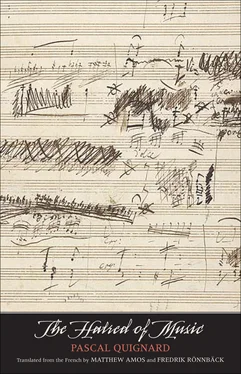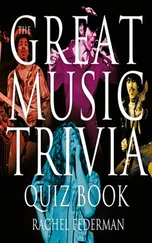At that moment, Eurylokhos and Perimedes untie ( anelysan ) Ulysses. It so happens that this is also the first time the word analysis appears in a Greek text.

The simple act of inverting the episode seems to me to give it its soundest meaning.
With their supernatural song, birds attract men to the place strewn with bones where they perch: with their artificial song, men attract birds to the place strewn with bones where they nest.
The artificial song that serves to attract birds is called a birdcall. The Sirens are birds’ revenge on the birdcalls that make them victims of their own song. Archaeological digs in the oldest caves reveal whistles and birdcalls. Paleolithic hunters mimetically lured the animals they hunted and from whom they did not distinguish themselves. Reindeer and ibex horns were depicted on the nocturnal walls. They are exhibited in books as illustrations flooded with light: it must not be forgotten that horns can also sound. The first human depictions sometimes hold a horn in their hands. To drink its blood? To hail the animal of which it is a sign (a sign that falls in the forest when it is shed) to the point of becoming the sound that signals it?
The speculation can then be articulated in the following way: Homer’s text retells in an inverted episode a prototypical tale about the origin of music, according to which the first music was that of hunters’ whistles-birdcalls. The secrets of hunting (animals’ speech, that is, the cries they emit and that call them) are taught during the initiation. Kirkè is the Sparrowhawk. If vultures and falcons, eagles, owls have been “deified” gradually by their status as celestials, to which hunters left a part of the prey that they had put to death at the ritual moment of sacrifice (detaching the skin, severing the limbs, and separating the organs from the flesh), the calls that attracted them were gradually “theologized.” This is how music, subsequently, became a song that attracted the gods to man, having attracted birds to hunters. It is a later development but the function remains the same.

Their ears lead them to the birdlime where their feet are ensnared: the wax in their ears prevents them from hearing the decoy.

In Rome, deer were considered cowardly animals — unworthy of senators who preferred boar — because they fled when they were attacked and were thought to adore music. Deer were hunted with calls or decoys: either a sort of syrinx mimicking a breeding grunt, or a live bound deer, bellowing and serving as a lure. Deer hunting, considered servile, was done not with spears but with nets: the antlers would become inextricably entangled in the mesh.

All tales tell stories of young men who acquire, in the course of an initiation, the language of animals. Both the call and the decoy hail the emitter in its song. Music in no way consists in bringing something into a human ronde: it allows entry into a re-created zoological ronde. The imitations bring about one another mutually. Birds are alone, like humans, in knowing how to imitate the songs of neighboring species. Mimetic sounds, which are the prey’s acoustic masks, bring the celestial animal, the terrestrial animal, the aquatic animal, all predatory animals including man, thunder, fire, sea, wind into the predatory ronde. Music makes the ronde turn through the sounds of animals in the dance, through images of animals and stars on the walls of the oldest caves. It intensifies the rotation. For the world turns, as do the sun and the stars, seasons and changes, blooms and fruits, ruts and reproductions of animals.
After predation, it ensures domestication. A call is already a domesticator. A decoy is already domesticated.

Ulysses is something of an Athenian. The rite of the Anthesteria in Athens relies on ropes and pitch. Once a year the souls of the dead would return to the city and the Athenians would tie up the temples with ropes and smear the doors of the houses with pitch. Should the errant breaths of the ancestors try to enter their former homes, they would get stuck outside the threshold like flies.
For the entire day clay pots full of food that had been prepared for them were displayed in the middle of the streets.
These breaths ( psychè ) were later called ghosts ( daimōn ) or even vampire-sorcerers ( kères ).
Sir James George Frazer reports that the Bulgarians, at the beginning of the twentieth century, had kept the following custom: in order to ward off evil spirits from their homes, they would paint a cross in tar on the outside of the door while hanging over the threshold a tangled skein composed of multiple threads. Before the ghost could count all the threads the cock would almost certainly crow and the shadow would have to hasten back to its grave before light started to spread, threatening to erase it.

Ulysses bandaged to his mast is also a tireless Egyptian scene. Coming out of the Underworld, Ulysses knows death and resurrection through magic song, surrounded by mummies whose ears have been plugged with natron and resin. Pharaoh in his solar boat crosses the celestial ocean.
Ithyphallic Osiris, on the walls of the tombs hidden in the pyramids, impregnates the bird Isis, who is straddling his belly, conceiving the bird-headed man, the falcon Horus.
The deceased (dark shadow) is depicted before the gates of the underworld preceded by his ba (the colorful siren spreading or folding its wings).
The mummification of corpses was accompanied by the embalmers’ singing. In the funeral accounts, the first budget entry is the linen, the second the mask, the third the music. The Harper’s Song , written in every tomb, repeats the refrain:
The call of the song never saved anyone from the grave.
So make your day happy and do not grow weary listening to the funereal call.
See: no one has brought his belongings with him …
See: no one has come back, who has left.

The ba is an inner bird with a human head and human hands in search of breath. It leaves the body and joins the mummy. The ba of the ancient Egyptians is close to the psychè of the ancient Greeks. In fact, the design of the human-headed bird ba was meticulously copied by Greek potters drawing the Sirens tempting Ulysses on their vases. What we call the Songs of the Desperate of ancient Egypt were really titled Dispute Between a Man and His Ba . The nocturnal refuge of the grave, its cool, water, and food, form the bait that attracts breaths drifting in the air, afflicted by the heat, hungry, thirsty.

Ulysses is bound like a sheaf of grains. He is tied like the carnival bear that is made to dance to the sound of pipes and rattles before being pushed into the river.
He resembles a Yakutian shaman: strapped to the top of a tree he marries the eagle and, on the banks of the Currant River, sinks knee-deep into the bones of the dead.
Sargon before the bird Ishtar.

Читать дальше













